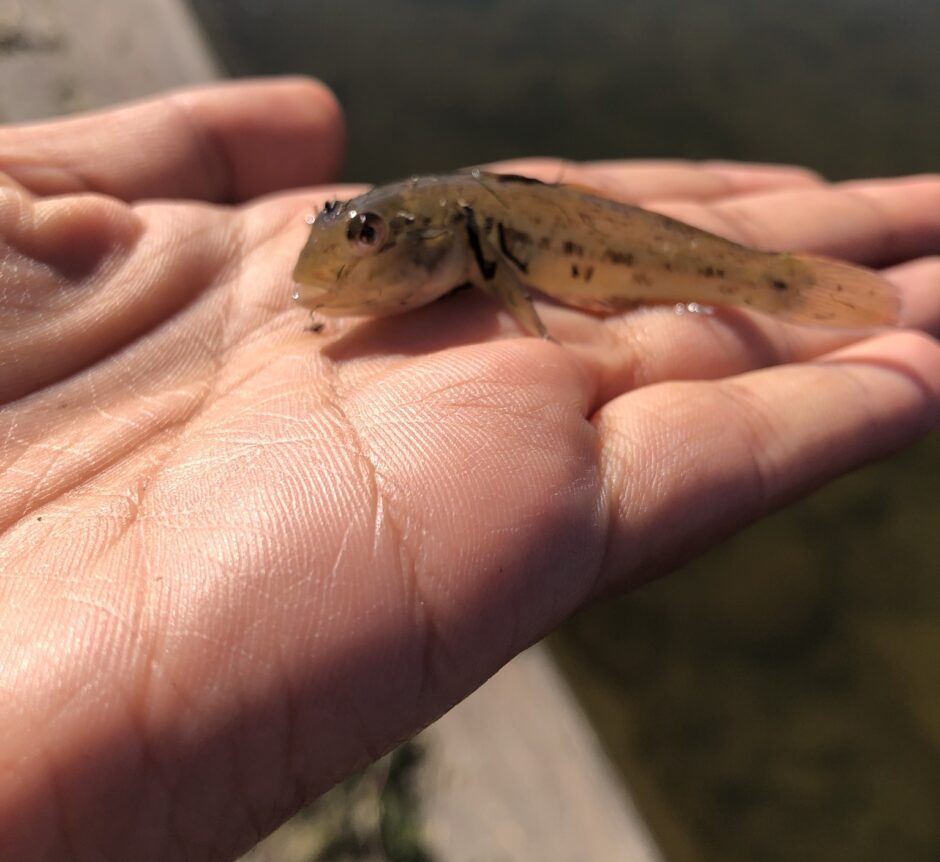Smallmouth Bass Thriving After Round Goby Invasion in the Great Lakes
 Round Goby (Credit: doctormalika via Naturalist Canada CC BY-NC 4.0)
Round Goby (Credit: doctormalika via Naturalist Canada CC BY-NC 4.0)While the round goby invasion into the Great Lakes region was initially a major concern for resource managers, various studies have found that round goby have seemingly integrated into the lakes’ food web. Natural predators in the lake are doing the work of invasive species managers all on their own, chowing down on round goby and enjoying a larger pool of prey.
More Prey Means Bigger Bass
While predators are thriving under high food availability, anglers are catching bigger fish. For example, anglers have reported that the smallmouth bass caught in Lake Erie and Lake Ontario have gotten heavier since the round goby invasion.
“The fishermen out there saw changes in the weight of the smallmouth bass they were catching,” said Derek Crane, study author, former research associate at Lake Superior State University’s School of Biological Sciences and current Associate Professor at Coastal Carolina University. “These fish were looking plump and well fed.”
Resource managers and local research groups had made similar observations during their population surveys and sampling, so Crane and his colleagues from the New York State Department of Environmental Conservation and SUNY-ESF studied the phenomenon.
Published in the journal of Freshwater Biology, researchers looked at nearly 20 years of data gathered by the DEC on the weights and lengths of four species before and after the goby invasion. The round goby invasion is a unique case of invasive species due to how successful it was, seemingly integrating into the food web. Results indicated that smallmouth showed the clearest post-invasion weight boost, followed by yellow perch.
Since their invasion, round goby and smallmouth bass have been closely linked as prey and predator due to shared habitat preferences. Both species are drawn to rocky habitats, and smallmouth bass target benthic prey like crayfish and, more recently, round goby. An earlier study found that round goby made up 75 percent of Lake Erie smallmouth diet.
“I think it was a real natural switch for smallmouth,” Crane said. “Round goby were real abundant, so they just started chowing on round goby.”
In Lake Erie, smaller bass have benefitted the most from a larger prey pool. For example, a 6-inch bass caught today would be around 17 percent heavier than one caught before the gobies arrived. Alternatively, bass around 19 inches and longer would look about the same. The opposite was true in Lake Ontario, where larger smallmouth bass showed the biggest gain. More specifically, they weigh in at around 12 percent greater mass than pre-invasion fish.
Walleye were also assessed, but the researcher did not detect any changes between the pre- and post-invasion weights and lengths. While some walleye in Lake Ontario appear to be heavier, this is likely a result of changes in other prey fish populations due to walleye preferring to feed in mostly offshore areas.
Conclusion
While anglers seem to enjoy larger smallmouth bass, resource managers worry about the long-term impact of gobies on the fishery. In regards to smallmouth bass overall, Crane warns that fish that grow faster tend to die younger. A shorter lifespan limits the number of years a particular fish can reproduce, which could lead to declines in the population. Additionally, smallmouth bass eggs are targeted by round gobies which prey on the unhatched fish.
According to Crane, Lake Ontario holds some “very large” bass, but anglers are having a harder time catching them. Conversely, Lake Erie is a different story.
“Right now, the bass population, at least in Lake Erie, is doing well,” Crane said. “It’s probably, if not the best, then one of the best smallmouth bass fisheries in the world.”
Ultimately, while adult smallmouth bass seem to benefit from the invasion, their spawn and species size could be threatened by the presence of round goby in the region. Such complexities make managing round goby a difficult task for resource managers. The species’ pervasiveness makes it difficult to control, and native species’ reliance on gobies has changed the fishery. Decades after the invasion, researchers are still trying to define all of these shifts.



0 comments